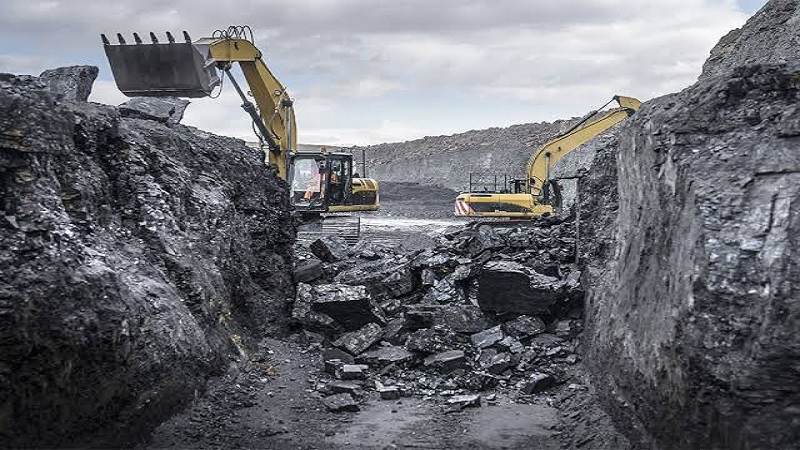
Image Courtesy: steelguru.com
The villagers sitting on dharna at Udaipur block in Ambikapur district recalled how Rahul Gandhi visited them in June 2015 at Madanpur pledging his support to the people’s protest against the coal mines in the Hasdeo-Arand coalfield region but the Chhattisgarh government led by Congress now “ignores” their plea, The Indian Express reported.
The very biodiversity-rich Hasdeo-Arand coalfield region was declared ‘No-Go’ area for mining in 2010 by Jairam Ramesh, then Union Minister for environment and forest.
However in 2013, he refused the recommendations of the Forest Advisory Committee (FAC), which he had earlier accepted. The reasons he cited for the refusal of the recommendations and allocations of the coal blocks were that the coal blocks were located in the fringe area of the forest and not the actual biodiversity-rich area, that changes had been made to mining plans to lessen the damage, that concerned raised about the wildlife in the forest could be managed through a wildlife management programme, that these would meet growing energy demands in an ‘environmentally friendly’ manner and that he, as minister, “has to balance and keep the broader developmental picture in mind and balance out different objectives and considerations”.
It has been over a month that villagers have held indefinite demonstrations demanding the cancellation of land acquisition and environmental clearances for coal projects in the region where around 20 coal blocks have been identified in coalfields of which 8 coal blocks have been auctioned.
Villagers say that a memorandum of demands had been given to the Chief Minister Bhupesh Baghel and collectors of Surajpur, Korba and Jashpur, but the tehsildar of the area says that no such memorandum has been received.
Coming together under the Hasdev Aranya Bachao Sangharsh Samiti (HABSS), the protestors have written to Baghel demanding that no mining project be carried out in the region, while also asking him to scrap land acquisition on the villages of Salhi, Hariharpur and Fathepur in the Parsa coal block in Surguja and Surajpur districts.
The protestors also demanded that the developer-cum-operator agreement between the Adani group and Chhattisgarh Power Generation Company, which was allotted the Paturia and Gidhmuri coal block, be cancelled, The Hindustan Times reported.
With the Congress-ruled state government yet to respond, the villagers continue fighting for their rights over ‘jal-jungle-jameen’ and observed ‘Rajya Bachao Utsav’ (save the state) when the entire Chhattisgarh was busy celebrating its 20th Foundation Day festival in the first week of November.
The land which also figures under the 5th Scheduled Area cannot be taken without the consent of the villagers but this provision is being violated, alleges Alok Shukla, convener of the Chhattisgarh Bachao Andolan (organisation fighting for forest rights of tribals and the mining issues).
The Parsa East and Kete Basan coal block in the region, which was considered an inviolate forest area, has seen mining activities over the years despite ongoing legal cases.
The Parsa mine, awarded to the Rajasthan Rajya Vidyut Utpadan Nigam Limited, is one of the 30 mapped mines in Chhattisgarh’s Hasdeo Arand region. It is home to forest-dwelling Adivasi communities, such as the Gonds, who are deeply dependent on forest produce, and agriculture. The region is also highly bio diverse and ecologically fragile with dense sal forests, rare plants, perennial water sources, and wildlife species. But the vast coal reserves in the region threaten its rich ecosystem—the Hasdeo Arand Coalfield, as mapped by the ministry of coal, has more than a billion metric tonnes of proven coal reserves, spread over an area of 1,878 square kilometres. Of this area, 1,502 square kilometres comprise forest land.
Residents of the villages destroyed by the PEKB mine have not been rehabilitated and regret giving up their land for a good cause. Many have not got jobs and have resorted to menial work. Animals displaced by the mining are now coming to the villages and there are increased instances of elephant and bear attacks which have caused crop and house damage. Streams used by villagers have now become polluted. The authorities have not assessed the required land for mining and nor have they considered alternatives. Adivasis whose livelihoods depends on forests know that Hasdeo is their home and that the government cannot illegally snatch it from them.
In an interview to The Caravan, Jainandan Singh Porte, a member of the HABSS said that the villages have filed community claims under the Forest Rights Act (FRA) and will continue to fight for their land undeterred.
Related: